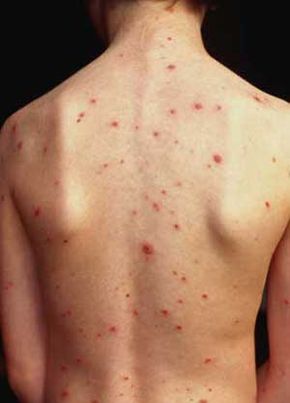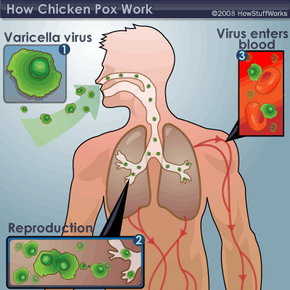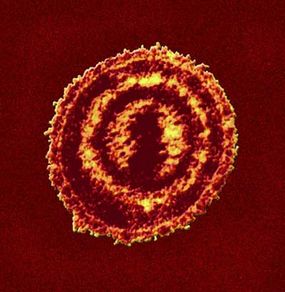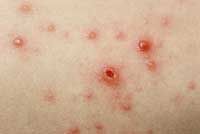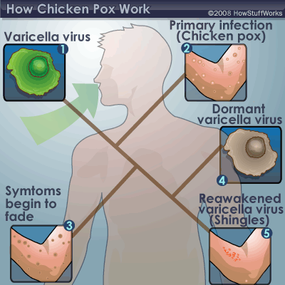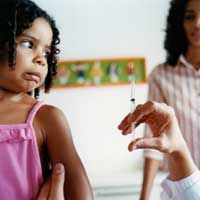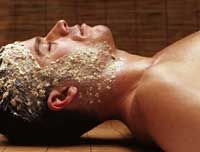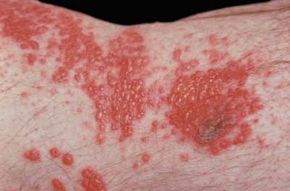Despite differing languages, cultures and upbringings, kids across the world once shared the same itchy, icky, blistery milestone: chicken pox. From Beijing to Boston, these pesky pustules have plagued up to 95 percent of children and adults in densely populated areas, according to the Public Health Agency of Canada. Sprouting anywhere from 30 to 1,500 blisters on its victims, this globetrotting nuisance leaves people feverish and aching to scratch.
Chicken pox is the common name for the varicella zoster virus, which has harassed humans for centuries. Naples -born Giovanni Filippo Ingrassia, who studied the structure of bones, first identified the varicella virus in the 16th century [source: Ackernecht]. It took another few hundred years before doctors could consistently tell chicken pox apart from smallpox, its more lethal viral cousin [source: Centers for Disease Control and Prevention (CDC)].
Advertisement
The varicella virus is incredibly contagious, spreading nimbly through the air between unsuspecting targets. How contagious? Some doctors say that you can catch chicken pox from a shopper parked in a different aisle of the supermarket [source: Rauch]. It typically strikes children under 10 years old during the winter and early spring [source: CDC]. Consequently, most kids in the U.S. are now vaccinated for it, drastically reducing the number of people infected.
In this article, we are going to learn why chicken pox is so prevalent, what it does to your body, how to treat it and how to avoid it.
Advertisement
